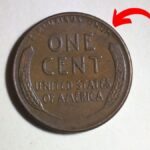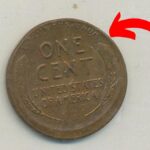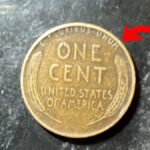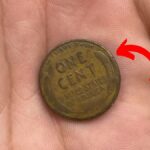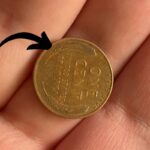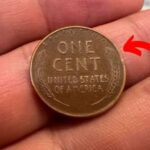Lincoln Wheat Penny Valued at $1 Million: Have you ever considered that the small copper coins jingling in your pocket could be worth a fortune? It may sound like something from a fairy tale, but one particular Lincoln Wheat Penny carries a value of approximately $1 million—and amazingly, it might still be circulating among everyday coins. This seemingly ordinary penny could be sitting in a jar on your shelf, hiding in an old collection, or even handed to you as change during your next purchase. The story behind this valuable coin reveals how something so common can become extraordinarily precious due to rare circumstances.
Most people glance at pennies without a second thought, tossing them into jars or leaving them at checkout counters. However, coin collectors and historians know that certain pennies hold tremendous value because of their rarity, historical significance, and unique characteristics. The Lincoln Wheat Penny stands as perhaps the most fascinating example of how a simple coin can become a sought-after treasure worth more than most people earn in a lifetime.
Understanding the Lincoln Wheat Penny
The Lincoln Wheat Penny first entered circulation in 1909 to commemorate the 100th anniversary of Abraham Lincoln’s birth. This coin marked a significant milestone in American currency as it became the first U.S. coin to feature the likeness of an actual person rather than symbolic figures. The design showcases Lincoln’s distinguished profile on the front (obverse) side, while the reverse displays two wheat stalks elegantly framing the words “ONE CENT” and “UNITED STATES OF AMERICA.”
These distinctive pennies were manufactured continuously from 1909 until 1958, when they were replaced by the Lincoln Memorial design. Made primarily of copper, Wheat Pennies have a warm, reddish-brown appearance that distinguishes them from more modern pennies. Most Wheat Pennies hold modest value, typically worth only a few cents or perhaps a dollar if in excellent condition. However, certain rare variations can fetch extraordinary prices that would astonish most casual observers.
The Million-Dollar Mistake
Among all Lincoln Wheat Pennies, the 1943 Bronze version stands as the undisputed king of value. What makes this particular coin so immensely valuable lies in a fascinating wartime error. During World War II, copper was designated as a strategic metal needed for the war effort. The U.S. Mint responded by producing pennies made from zinc-coated steel instead of copper throughout 1943, creating silvery-looking coins that many Americans found strange and unfamiliar.
However, a remarkable mistake occurred during this transition. A small number of copper blanks (called planchets) from 1942 remained in the coin presses or became mixed with the new steel blanks. When these copper planchets were struck with the 1943 dies, they created copper pennies in a year when virtually none should have existed. Numismatic experts estimate that fewer than 30 genuine 1943 Bronze Lincoln Pennies exist across all U.S. mints, making them extraordinarily rare and valuable.
Why Such an Expensive Penny Might Still Be in Circulation
It seems incredible that a coin worth $1 million could still be circulating undetected, but several factors make this entirely possible. Unlike valuable art or jewelry that clearly appears distinctive, rare coins often look very similar to their common counterparts to untrained eyes. Many people simply don’t examine their change carefully, especially smaller denominations like pennies that many consider insignificant.
Additionally, the tracking system for coins in circulation doesn’t distinguish between rare and common versions. Once a coin enters general circulation, it moves freely based solely on its face value. A cashier or bank teller handling thousands of coins daily would rarely have the knowledge or time to identify a rare specimen. This anonymity means that precious numismatic treasures can potentially exchange hands for decades at mere face value before someone recognizes their true worth.
How to Identify the Rare 1943 Bronze Penny
If you’re curious whether you might possess this valuable treasure, several key characteristics can help identify a genuine 1943 Bronze Lincoln Penny. First and most obviously, check the date—it must read 1943. Then examine the color—unlike the silvery appearance of regular 1943 steel pennies, the rare bronze version has the typical copper color of standard pennies from other years.
A simple but effective test involves using a magnet. The common 1943 steel pennies are magnetic and will stick to a magnet, while the rare bronze version contains no steel and will not be attracted to magnetic forces. The bronze penny also weighs slightly more than its steel counterpart—approximately 3.11 grams compared to the steel penny’s 2.7 grams. If your 1943 penny passes these initial tests, avoid cleaning or altering it in any way, as this could significantly reduce its value.
Other Valuable Lincoln Wheat Pennies Worth Searching For
While the 1943 Bronze Penny represents the pinnacle of Wheat Penny values, several other varieties also command impressive prices. The 1909-S VDB penny (featuring the designer’s initials and minted in San Francisco) can be worth thousands of dollars. The 1914-D and 1922 “No D” pennies also rank among the most valuable in the series, with prices ranging from several hundred to tens of thousands of dollars depending on condition.
The condition of any coin dramatically affects its value. Professional numismatists grade coins on a scale ranging from Poor (heavily worn) to Mint State (perfect condition). A rare penny in excellent condition might be worth ten or even hundred times more than the same penny showing significant wear. This makes examining your old coins potentially very rewarding, as even common dates in pristine condition can sometimes hold surprising value.
Disclaimer
This article is provided for informational purposes only and should not be considered investment advice. The values mentioned for rare coins are based on historical sales and auction results, but actual values may vary significantly depending on condition, authenticity, and market demand. Always consult with a professional coin dealer or numismatist before making financial decisions based on potential coin values. Authentication by a recognized grading service is strongly recommended before attempting to sell any potentially valuable coin. The author and publisher are not responsible for financial decisions made based on this information.

